Native flowers are a celebration of living — they feed pollinators with nectar and pollen as well as other wildlife with seeds, and their leaves are used by caterpillars, bees and all sorts of other creatures. What’s good for nature is good for us, too, as we design gardens that are visually pleasing and welcoming to all. Here’s a list of native wildflowers with unique foliage to spruce up your garden after the blooms have faded.
Not in the Central Plains? Browse attractive foliage for more regions of the U.S.
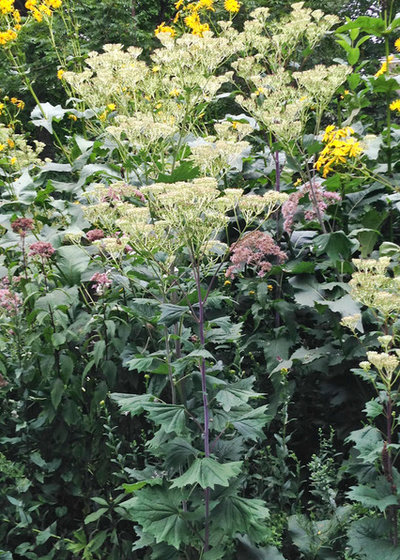
Holm Design & Consulting LLC
Pale Indian Plantain (
Arnoglossum atriplicifolium)
Native from Minnesota south to Oklahoma and all the way east
I’m a fan of the fan-like leaves that dangle from the stems of pale Indian plantain. With its towering height and large blue-gray leaves, this plant can do a lot in the garden. It blooms in mid to late summer and prefers dry to medium soil in full to partial sun.
See how to grow pale Indian plantain
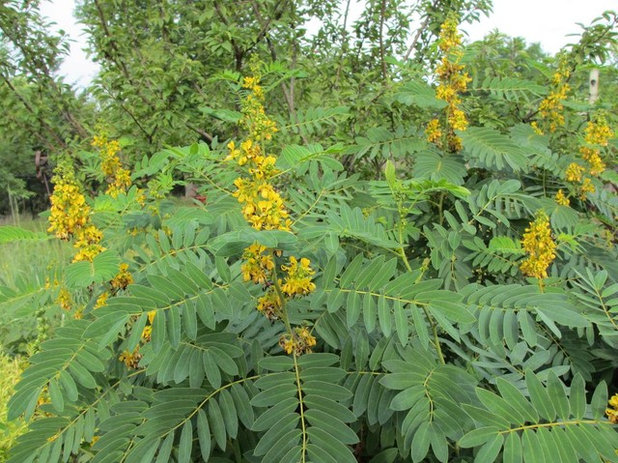
Benjamin Vogt / Monarch Gardens
American Senna (
Senna hebecarpa)
Native from Wisconsin and Illinois east to southern New England and south to Georgia and Tennessee
This plant always makes me feel a bit like I’m in a tropical or Jurassic-era landscape. Its fanning leaves will stand out in the garden, and its flowers bloom for weeks in mid to late summer, much to the delight of hundreds of bumblebees. It can grow 4 to 5 feet tall and wide, and prefers full sun and medium to moist soil.
See how to grow American senna
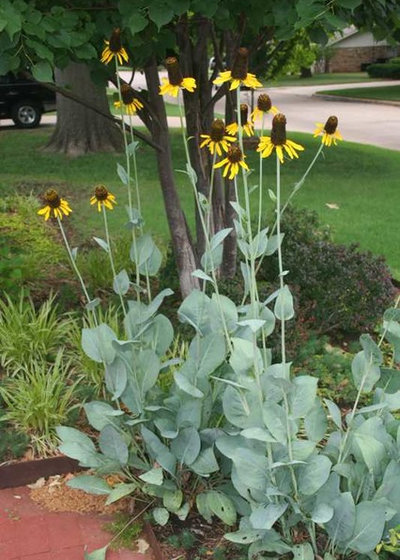
Missouri Botanical Garden
Giant Coneflower (
Rudbeckia maxima)
Native to northeastern Texas, northwestern Louisiana and southwest Arkansas
The giant blue foliage of giant coneflower puts on quite a show, despite the plant’s small native range. (In fact, this is the color of my grandmother’s house.) Moist soil in full sun is perfect to let this 4- to 6-foot-tall stunner tower above the rest of the garden. It has a good four-week bloom period in midsummer, attracting birds and insects with its big yellow blooms.
See how to grow giant coneflower
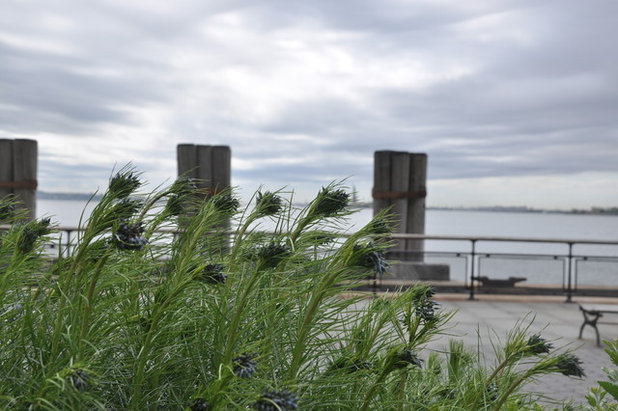
J Biochemist
Hubricht’s Bluestar (
Amsonia hubrichtii)
Native to eastern Oklahoma and western Arkansas
Bluestar is most known for its fine, feathery foliage that turns bright yellow and orange in fall, but the masses of blue flowers it produces in late spring are great for long-tongued bees, moths and hummingbirds. Dry soil in full to partial sun brings out the best in this perennial. It grows to 2 to 3 feet tall and wide.
See how to grow bluestar
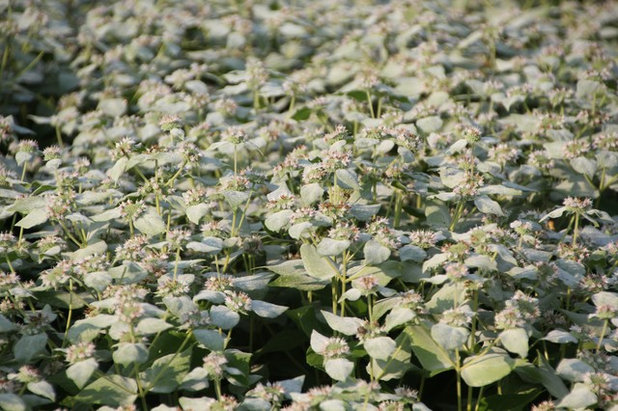
Donald Pell - Gardens
Short-Toothed Mountain Mint (
Pycnanthemum muticum)
Native from Texas north through Illinois and Michigan and all points east
This 3-foot-tall native mint draws pollinators, and its frosty-colored leaves add a touch of coolness to the summer garden. It prefers moist soil and grows in full sun to partial shade.
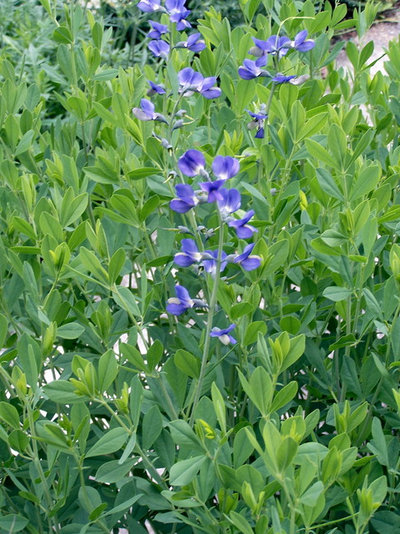 Blue Wild Indigo
Blue Wild Indigo (
Baptisia australis)
Native to the Central Plains, Southeast and Northeast of the U.S.
Depending on the light, the smooth oval leaves of blue wild indigo can be bright green to dusky blue. With its masses of stems that make it 3 to 4 feet wide and tall, you can’t miss its visual impact. Blue wild indigo blooms in May, with dark ornamental seedpods persisting through winter. It prefers full to partial sun and medium to dry clay or sand.
See how to grow blue wild indigo
Photo by Valérie75
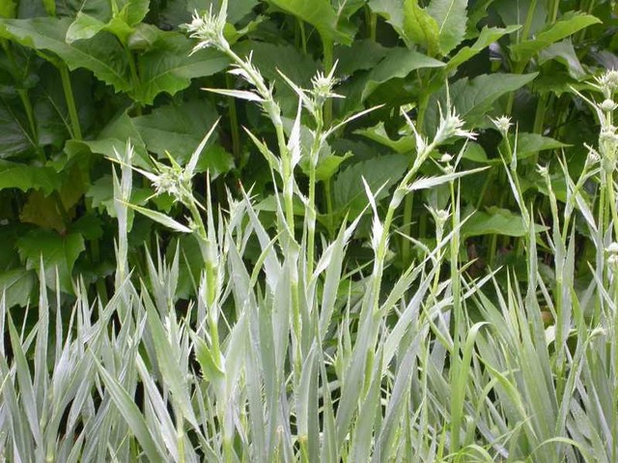
Missouri Botanical Garden
Rattlesnake Master (
Eryngium yuccifolium)
Native from Minnesota south to Texas and all points east
Put a couple of these together in a drift, and you have a good show. While the smoky leaves look like they might be sharp, they aren’t at all, and the white-blooming globe in midsummer attracts pollinators like crazy. Full sun and almost any soil for this adaptable (once established) perennial are best.
See how to grow rattlesnake master
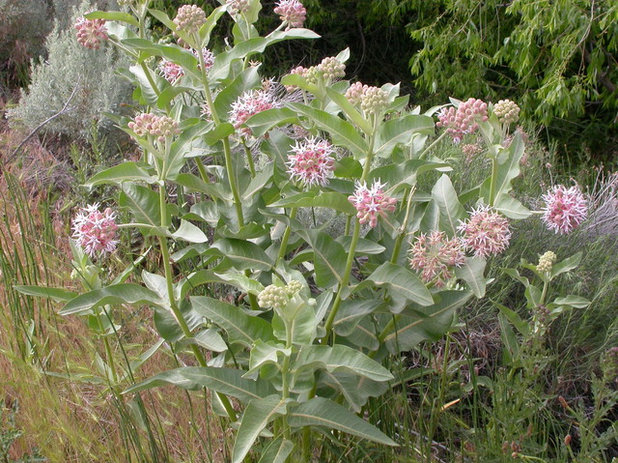 Showy Milkweed
Showy Milkweed (
Asclepias speciosa)
Native from Minnesota south to Oklahoma and all the way to the Pacific Ocean
I just love the big, fuzzy leaves of this plant. And while the sweetly scented blooms aren’t anything to sneeze at, the monarchs and I appreciate the foliage much more on this 3- to 5-foot-tall milkweed. Plant it in full sun to partial shade in any soil type, even clay. You’ll need to water only occasionally once it’s established.
See how to grow milkweed | See California native milkweeds
Photo by Matt Lavin
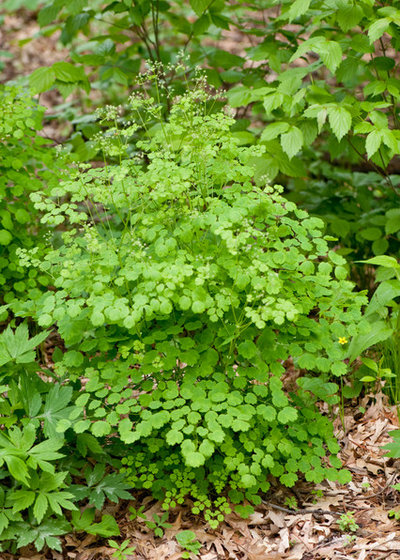
Holm Design & Consulting LLC
Early Meadow-Rue (
Thalictrum dioicum)
Native from Arkansas north to Minnesota and all points east
You don’t usually grow meadow-rue for the overwhelming flowers, as most of the flowers tend to be small, airy and hard to see from a distance. But the foliage is truly different and reminds me of old coins. Try this native of dry woodlands in tough shady areas.
See how to grow early meadow-rue
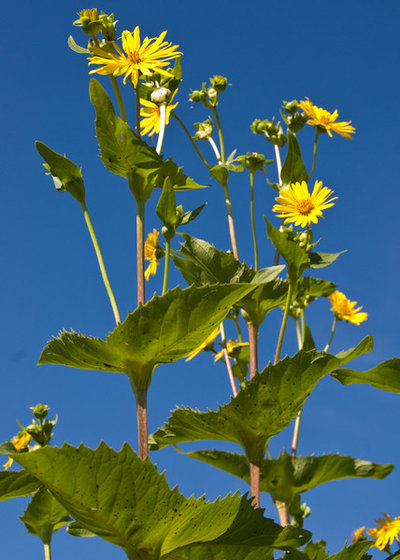
Holm Design & Consulting LLC
Cup Plant (
Silphium perfoliatum)
Found in North Dakota to Oklahoma and east
This plant can reach over 8 feet tall, with huge leaves that are about 10 inches long and 6 inches wide. Those leaves cup water near the stem for insects and birds to drink, and the stems themselves are perfectly square and very strong. It grows in full sun in all soil conditions except dry soil.
See how to grow cup plant
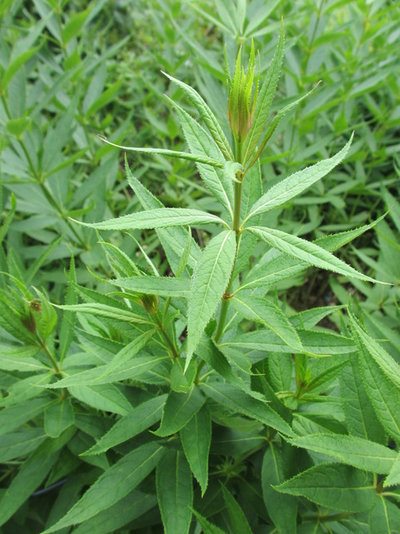
Benjamin Vogt / Monarch Gardens
Culver’s Root (
Veronicastrum virginicum)
Native in the northern Plains, northern Midwest and Northeast
Here’s a bonus plant. While some think the leaves on Culver’s root are ho-hum, I love the way they circle all the way up the stem’s 4- to 6-foot length — not to mention the color of newly emerging leaves at the top. Sure, the long-blooming white flowers visited by every pollinator you can imagine are showier, but let’s think outside the box.
See how to grow Culver’s root
Your turn: What native wildflowers with interesting foliage would you add to this list? Tell us, or show us, in the Comments.





